Abstract
To gain insight into the mechanism by which steroidal hormones influence the development of canine prostatic hyperplasia, nuclear and cytosolic androgen- and estrogen-receptor content, as measured under exchange conditions by the binding of [3H]R1881 (methyltrienolone) and [3H]estradiol, respectively, were quantitated in the prostates of purebred beagles of known age. In young dogs with spontaneously arising and experimentally induced (androstanediol plus estradiol treatment) prostatic hyperplasia, nuclear, but not cytosolic, prostatic androgen-receptor content was significantly greater than that determined in the normal prostates of age-matched dogs (3,452±222 and 4,035±274 fmol/mg DNA vs. 2,096±364 fmol/mg DNA, respectively). No differences were observed between the androgen-receptor content of the normal prostates of young dogs and the hyperplastic prostates of old dogs. The cytosolic and nuclear estrogen-receptor content of spontaneously arising prostatic hyperplasia in both young and old animals was similar to that found in normal prostates. The administration of estradiol plus androstanediol to castrate dogs significantly increased the prostatic nuclear androgen-receptor content over that found in dogs treated only with androstanediol. This estradiol-associated increase in nuclear androgen-receptor content was accompanied by the development of benign prostatic hyperplasia.
Estradiol treatment of castrate dogs resulted in an increase in prostatic nuclear estrogen-receptor content, in the appearance of a putative prostatic cytosolic progesterone receptor, and in an alteration of the epithelium of the prostate to one characterized by squamous metaplasia. Treatment of castrate dogs with both estradiol and androstanediol resulted in a reduction in prostatic nuclear estrogen-receptor content, disappearance of the progesterone receptor, and loss of squamous metaplasia.
An increase in nuclear androgen-receptor content, thus, appears to be an important event in the development of both spontaneously arising and experimentally induced canine prostatic hyperplasia. The mechanism of androgen-estrogen synergism in the experimental induction of canine benign prostatic hyperplasia may be explained by estradiol-mediated increases in nuclear androgen-receptor content. Because androstanediol blocked certain estradiol-mediated events within the prostate, a negative feedback mechanism may exist in which the response of the canine prostate to estrogens is modulated by rising levels of androgen.
Full text
PDF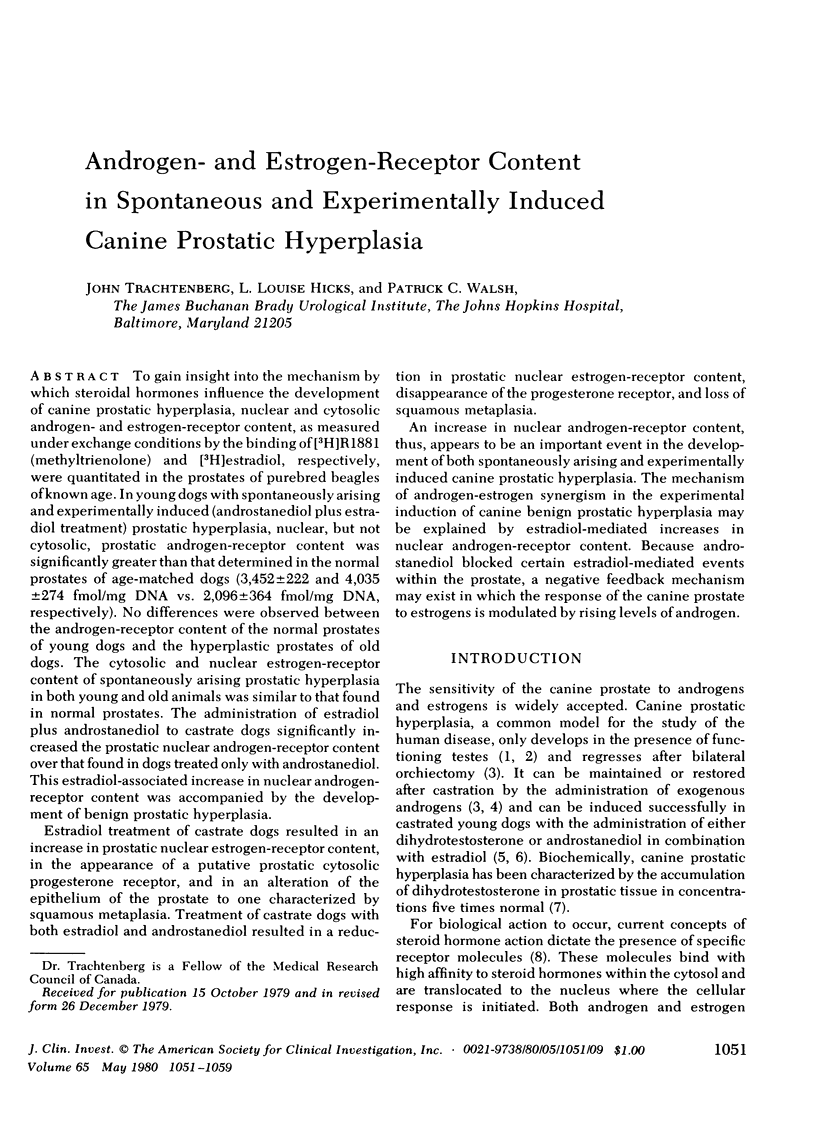
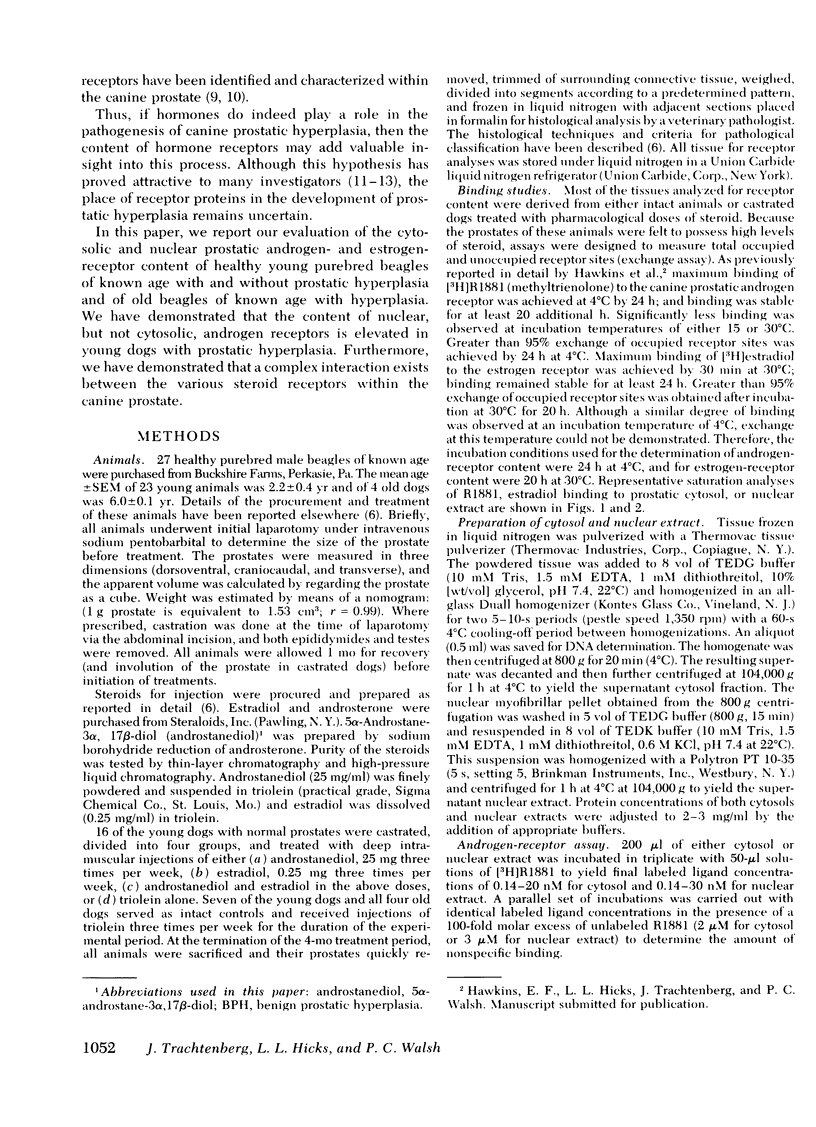
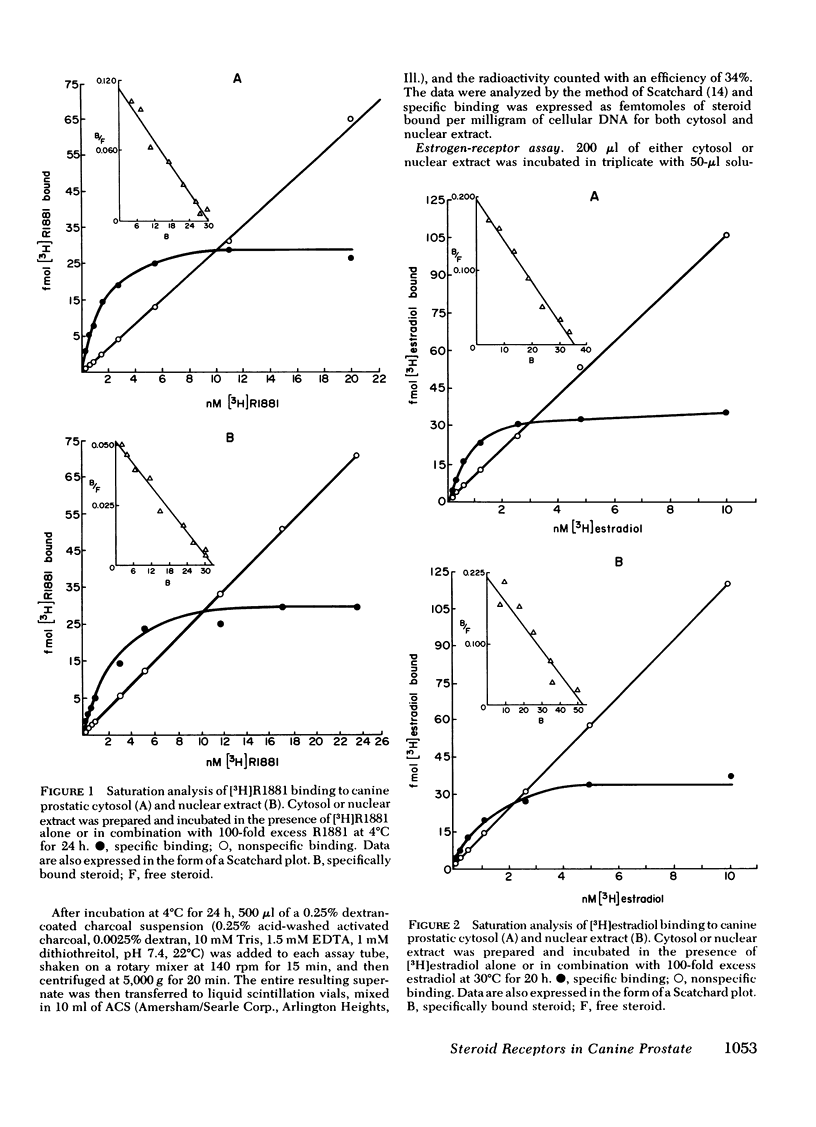
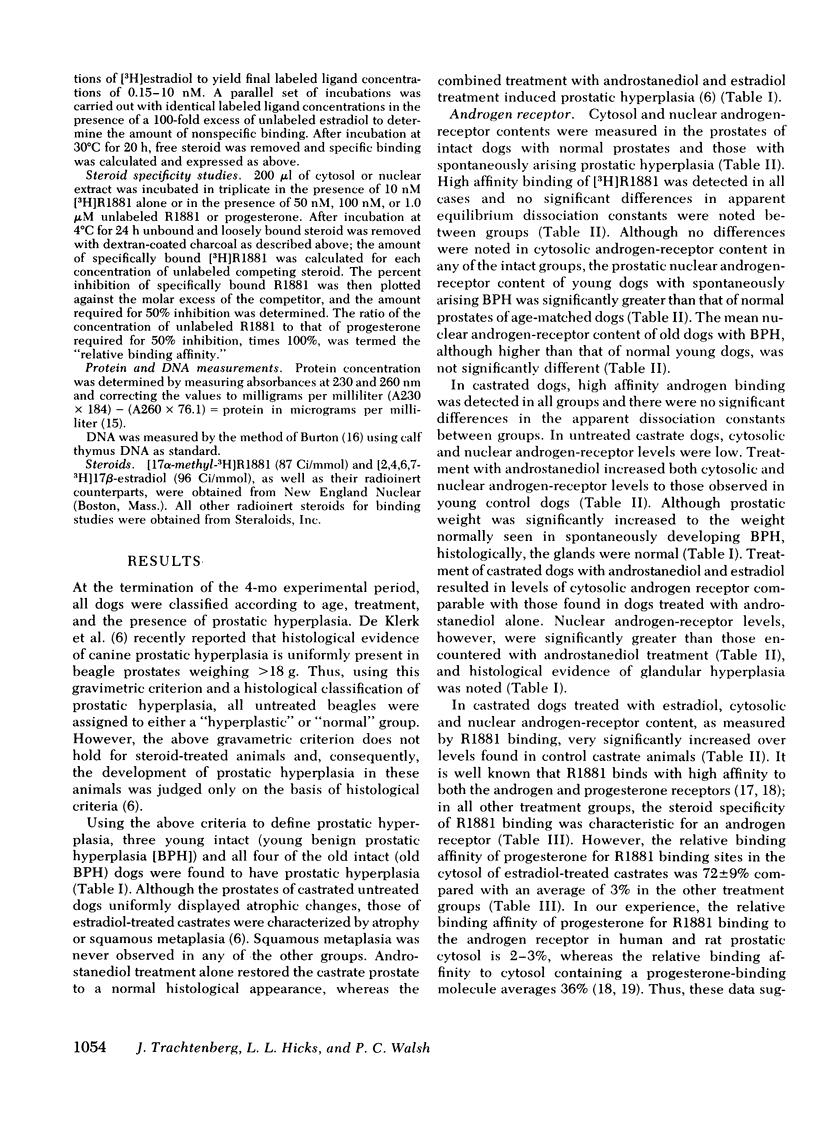
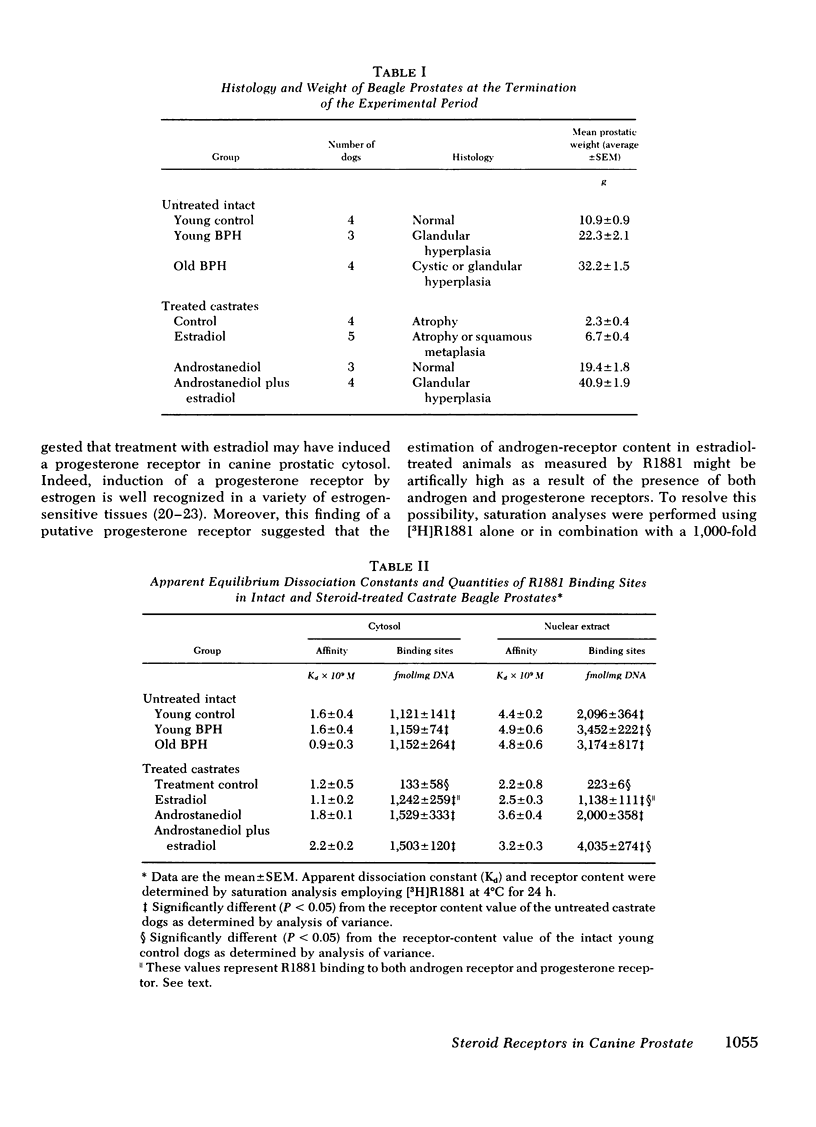
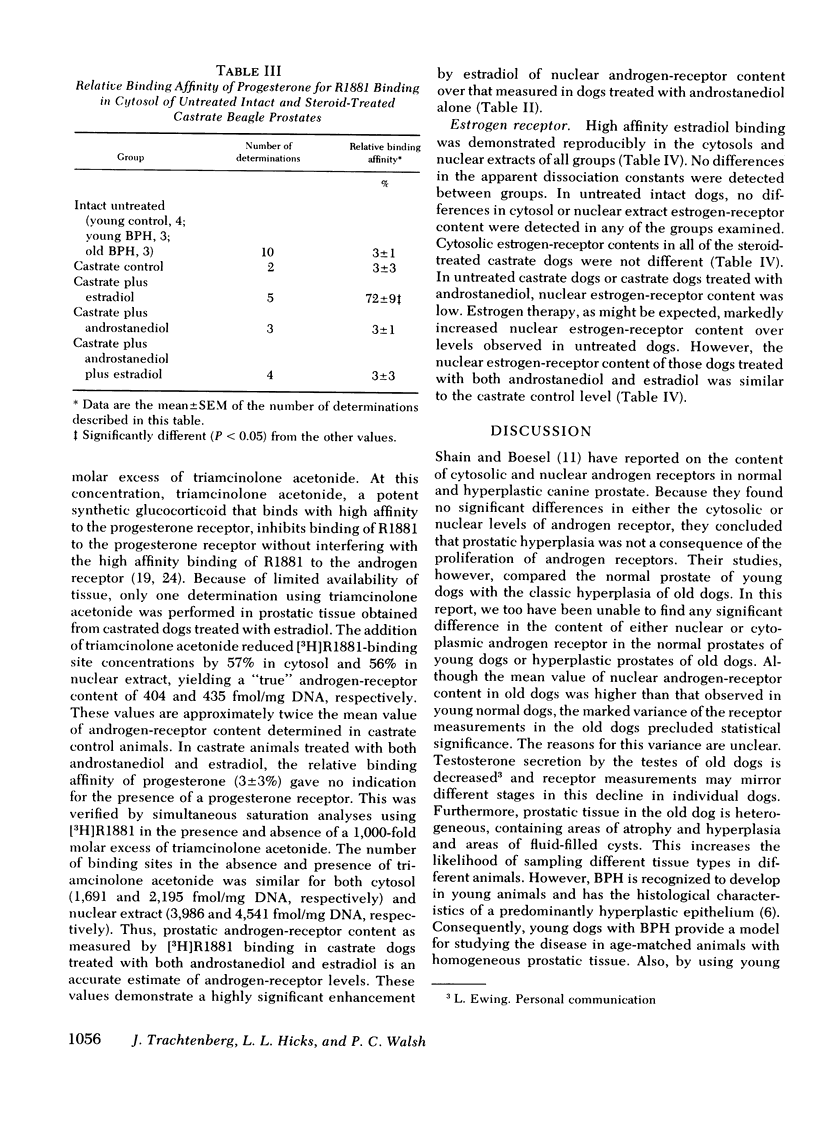
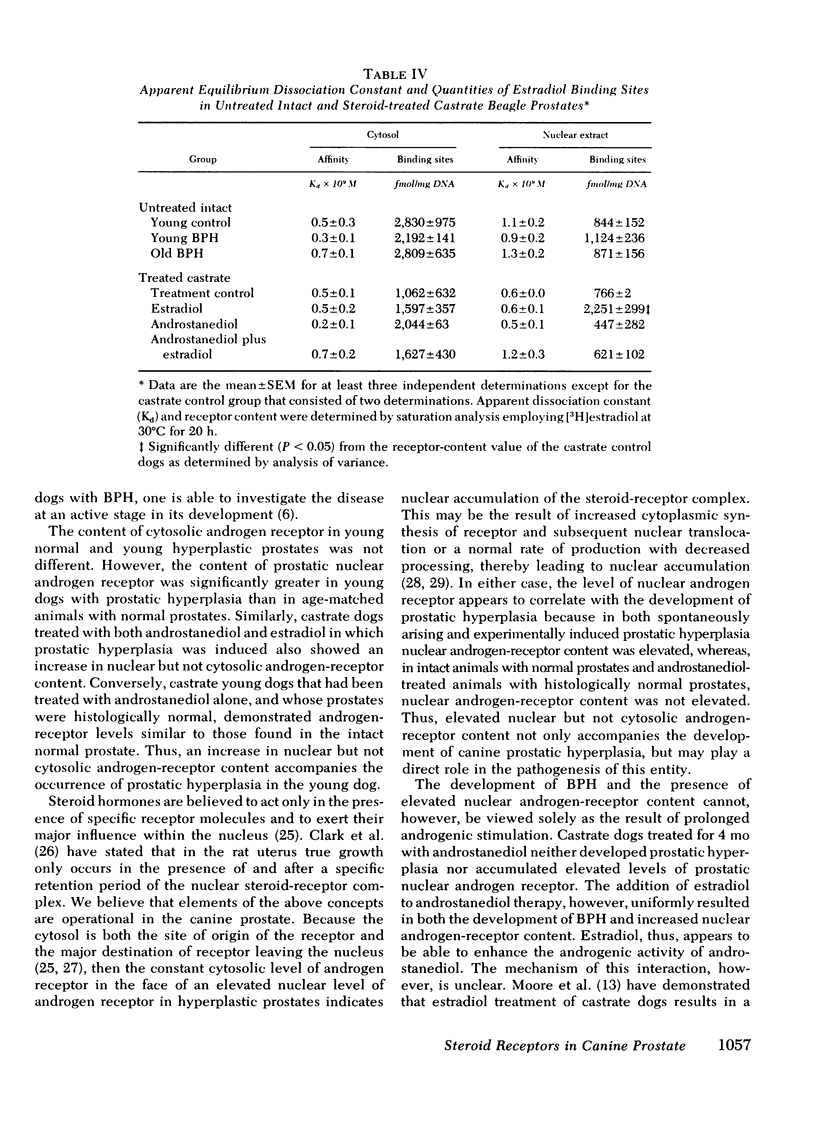
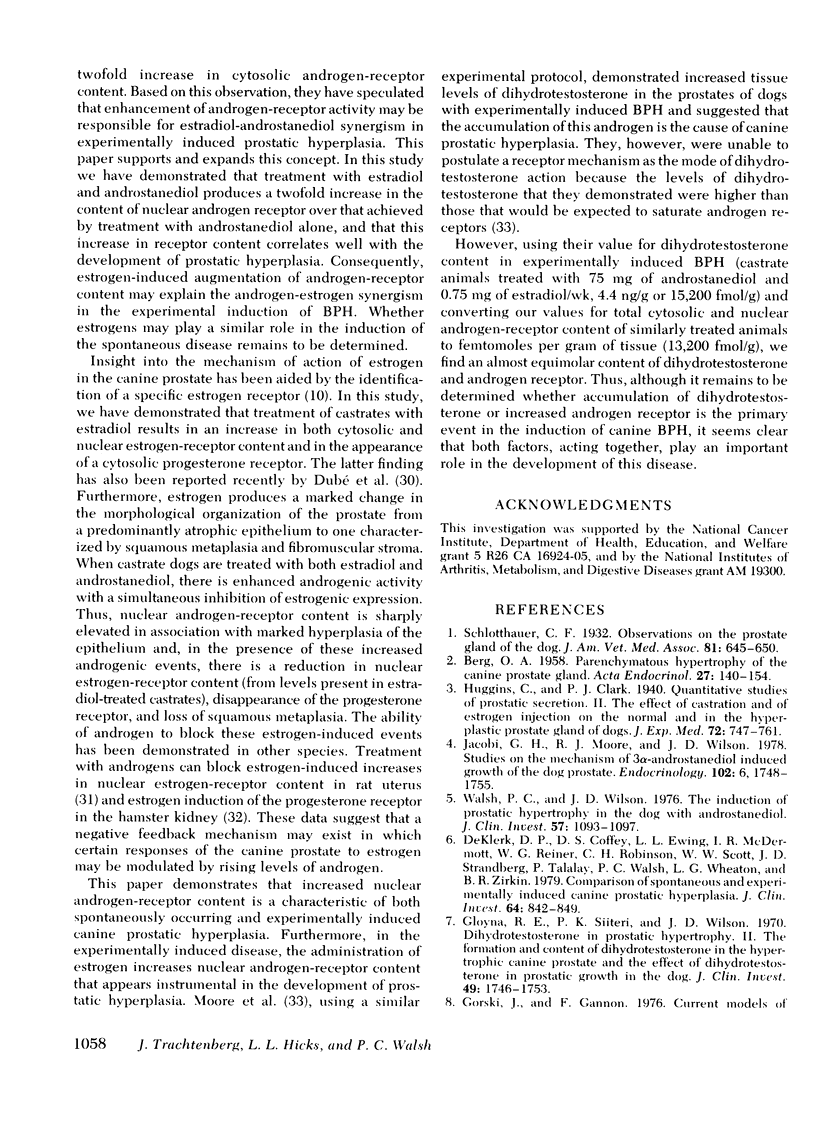
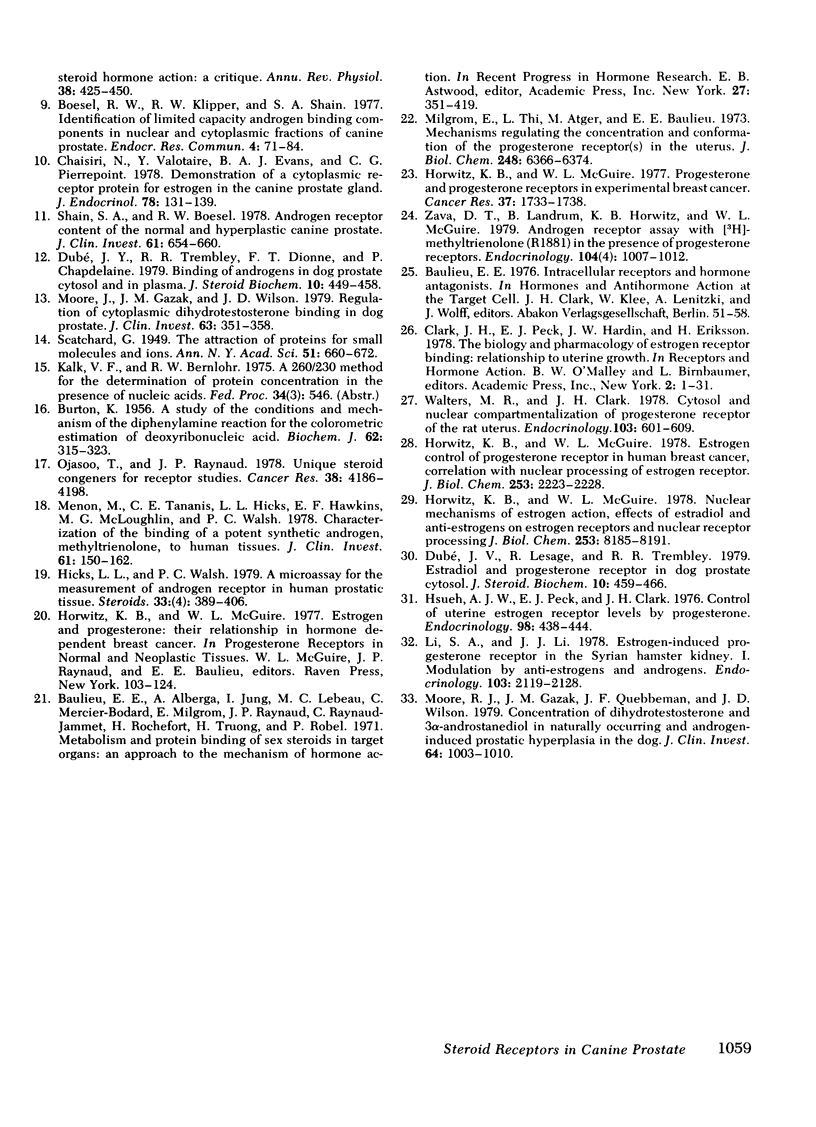
Selected References
These references are in PubMed. This may not be the complete list of references from this article.
- BERG O. A. Parenchymatous hypertrophy of the canine prostate gland. Acta Endocrinol (Copenh) 1958 Feb;27(2):140–154. doi: 10.1530/acta.0.0270140. [DOI] [PubMed] [Google Scholar]
- BURTON K. A study of the conditions and mechanism of the diphenylamine reaction for the colorimetric estimation of deoxyribonucleic acid. Biochem J. 1956 Feb;62(2):315–323. doi: 10.1042/bj0620315. [DOI] [PMC free article] [PubMed] [Google Scholar]
- Boesel R. W., Klipper R. W., Shain S. A. Identification of limited capacity androgen binding components in nuclear and cytoplasmic fractions of canine prostate. Endocr Res Commun. 1977;4(2):71–84. doi: 10.3109/07435807709073914. [DOI] [PubMed] [Google Scholar]
- Chaisiri N., Valotaire Y., Evans B. A., Pierrepoint C. G. Demonstration of a cytoplasmic receptor protein for oestrogen in the canine prostate gland. J Endocrinol. 1978 Jul;78(1):131–139. doi: 10.1677/joe.0.0780131. [DOI] [PubMed] [Google Scholar]
- DeKlerk D. P., Coffey D. S., Ewing L. L., McDermott I. R., Reiner W. G., Robinson C. H., Scott W. W., Strandberg J. D., Talalay P., Walsh P. C. Comparison of spontaneous and experimentally induced canine prostatic hyperplasia. J Clin Invest. 1979 Sep;64(3):842–849. doi: 10.1172/JCI109532. [DOI] [PMC free article] [PubMed] [Google Scholar]
- Dubé J. Y., Lesage R., Tremblay R. R. Estradiol and progesterone receptors in dog prostate cytosol. J Steroid Biochem. 1979 Apr;10(4):459–466. doi: 10.1016/0022-4731(79)90335-2. [DOI] [PubMed] [Google Scholar]
- Dubé J. Y., Tremblay R. R., Dionne F. T., Chapdelaine P. Binding of androgens in dog prostate cytosol and in plasma. J Steroid Biochem. 1979 Apr;10(4):449–458. doi: 10.1016/0022-4731(79)90334-0. [DOI] [PubMed] [Google Scholar]
- Gloyna R. E., Siiteri P. K., Wilson J. D. Dihydrotestosterone in prostatic hypertrophy. II. The formation and content of dihydrotestosterone in the hypertrophic canine prostate and the effect of dihydrotestosterone on prostate growth in the dog. J Clin Invest. 1970 Sep;49(9):1746–1753. doi: 10.1172/JCI106392. [DOI] [PMC free article] [PubMed] [Google Scholar]
- Gorski J., Gannon F. Current models of steroid hormone action: a critique. Annu Rev Physiol. 1976;38:425–450. doi: 10.1146/annurev.ph.38.030176.002233. [DOI] [PubMed] [Google Scholar]
- Hicks L. L., Walsh P. C. A microassay for the measurement of androgen receptors in human prostatic tissue. Steroids. 1979 Apr;33(4):389–406. doi: 10.1016/0039-128x(79)90014-x. [DOI] [PubMed] [Google Scholar]
- Horwitz K. B., McGuire W. L. Estrogen control of progesterone receptor in human breast cancer. Correlation with nuclear processing of estrogen receptor. J Biol Chem. 1978 Apr 10;253(7):2223–2228. [PubMed] [Google Scholar]
- Horwitz K. B., McGuire W. L. Nuclear mechanisms of estrogen action. Effects of estradiol and anti-estrogens on estrogen receptors and nuclear receptor processing. J Biol Chem. 1978 Nov 25;253(22):8185–8191. [PubMed] [Google Scholar]
- Horwitz K. B., McGuire W. L. Progesterone and progesterone receptors in experimental breast cancer. Cancer Res. 1977 Jun;37(6):1733–1738. [PubMed] [Google Scholar]
- Hsueh A. J., Peck E. J., Jr, Clark J. H. Control of uterine estrogen receptor levels by progesterone. Endocrinology. 1976 Feb;98(2):438–444. doi: 10.1210/endo-98-2-438. [DOI] [PubMed] [Google Scholar]
- Jacobi G. H., Moore R. J., Wilson J. D. Studies on the mechanism of 3 alpha-androstanediol-induced growth of the dog prostate. Endocrinology. 1978 Jun;102(6):1748–1758. doi: 10.1210/endo-102-6-1748. [DOI] [PubMed] [Google Scholar]
- Li S. A., Li J. J. Estrogen-induced progesterone receptor in the Syrian hamster kidney. I. Modulation by antiestrogens and androgens. Endocrinology. 1978 Dec;103(6):2119–2128. doi: 10.1210/endo-103-6-2119. [DOI] [PubMed] [Google Scholar]
- Menon M., Tananis C. E., Hicks L. L., Hawkins E. F., McLoughlin M. G., Walsh P. C. Characterization of the binding of a potent synthetic androgen, methyltrienolone, to human tissues. J Clin Invest. 1978 Jan;61(1):150–162. doi: 10.1172/JCI108913. [DOI] [PMC free article] [PubMed] [Google Scholar]
- Milgrom E., Thi L., Atger M., Baulieu E. E. Mechanisms regulating the concentration and the conformation of progesterone receptor(s) in the uterus. J Biol Chem. 1973 Sep 25;248(18):6366–6374. [PubMed] [Google Scholar]
- Moore R. J., Gazak J. M., Quebbeman J. F., Wilson J. D. Concentration of dihydrotestosterone and 3 alpha-androstanediol in naturally occurring and androgen-induced prostatic hyperplasia in the dog. J Clin Invest. 1979 Oct;64(4):1003–1010. doi: 10.1172/JCI109536. [DOI] [PMC free article] [PubMed] [Google Scholar]
- Moore R. J., Gazak J. M., Wilson J. D. Regulation of cytoplasmic dihydrotestosterone binding in dog prostate by 17 beta-estradiol. J Clin Invest. 1979 Mar;63(3):351–357. doi: 10.1172/JCI109310. [DOI] [PMC free article] [PubMed] [Google Scholar]
- Ojasoo T., Raynaud J. P. Unique steroid congeners for receptor studies. Cancer Res. 1978 Nov;38(11 Pt 2):4186–4198. [PubMed] [Google Scholar]
- Shain S. A., Boesel R. W. Androgen receptor content of the normal and hyperplastic canine prostate. J Clin Invest. 1978 Mar;61(3):654–660. doi: 10.1172/JCI108977. [DOI] [PMC free article] [PubMed] [Google Scholar]
- Walsh P. C., Wilson J. D. The induction of prostatic hypertrophy in the dog with androstanediol. J Clin Invest. 1976 Apr;57(4):1093–1097. doi: 10.1172/JCI108353. [DOI] [PMC free article] [PubMed] [Google Scholar]
- Walters M. R., Clark J. H. Cytosol and nuclear compartmentalization of progesterone receptors of the rat uterus. Endocrinology. 1978 Aug;103(2):601–609. doi: 10.1210/endo-103-2-601. [DOI] [PubMed] [Google Scholar]
- Zava D. T., Landrum B., Horwitz K. B., McGuire W. L. Androgen receptor assay with [3H]methyltrienolone (R1881) in the presence of progesterone receptors. Endocrinology. 1979 Apr;104(4):1007–1012. doi: 10.1210/endo-104-4-1007. [DOI] [PubMed] [Google Scholar]


